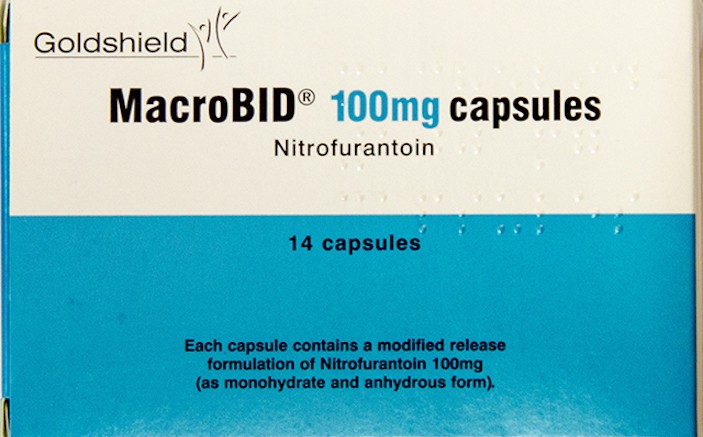This antibiotic is safer than previously thought for uncomplicated UTIs in older adults
Nitrofurantoin is a popular antibiotic used for uncomplicated urinary tract infections (UTI). It has many desirable properties, such as low levels of resistance, few interactions with other medications, low risk for allergic reactions, and it is generally tolerated well. It is also a category B medication in pregnancy, making it a popular choice for pregnant patients with UTIs.
Until recently, however, many physicians avoided nitrofurantoin in the older adult population. The 2012 Beers list published by the American Geriatrics Society is a list of high risk medications that should be avoided if possible in older adults. The list included nitrofurantoin for patients with creatinine clearance less than 60 mL/min because of low urine concentration and potential risk of side effects. However, the 2015 Beers list update revised the recommendation, and now only recommends against nitrofurantoin in patients with a creatinine clearance of less than 30 mL/min [1]. This change is based on better data review and newer publications showing the safety of the drug in patients with kidney disease [1,2]. For acute, uncomplicated cystitis, nitrofurantoin is considered a first line therapy unless the culture has shown resistance. It has a 92% early clinical cure rate [3], which is comparable to other regimens such as fosfomycin, fluoroquinolones, TMP-SMX, and beta-lactams. E. coli are responsible for 75-95% of urinary infections [4]. Susceptibility rates of E. coli to nitrofurantoin are around 95%, compared with 70-85% (with variation by region) for fluoroquinolones and TMP/SMX.5 It also has a much lower risk of Stevens-Johnson syndrome than TMP/SMX.
History
Nitrofurantoin was first used in the mid-1950s, and antibiotic resistance has not significantly increased since its introduction [3,5].
Indications
Nitrofurantoin is used for uncomplicated UTIs and cystitis. It should not be used for septic patients, or those with pyelonephritis, as there is poor penetration into the renal parenchyma, particularly if the urine is more alkaline. Nitrofurantoin has very good coverage for E coli, Enterococcus faecalis, and for Staphylococcal (including methicillin-resistant Staph Aureus) and Streptococcal species, with susceptibility rates around 95-100%. Certain strains of Klebsiella and Enterobacter are resistant, and most strains of Proteus, Serratia, Pseudomonas and Enterococcus faecium are resistant.
Dosing
The dose for treatment of UTIs in adults and children over 12 is 100 mg PO BID for 5-7 days. It can also be used in children between the ages of 1 month and 12 years at a dose of 5-7mg/kg/day divided into doses every 6 hrs, for 7 days [6].
Mechanism
Nitrofurantoin is a prodrug that is metabolized to reactive intermediates by bacterial proteins. The active compounds bind to the bacterial ribosome and inhibit protein synthesis. It is bactericidal in most cases.
Adverse Events
Rare adverse events have been noted, such as hepatitis, optic neuritis, peripheral neuropathy, and pulmonary toxicity.6 Pulmonary toxicity is more of a concern in patients who use it chronically for UTI prophylaxis, rather than for acute treatment courses. C. diff. associated diarrhea and fungal or bacterial superinfections have also been seen [6].
Cautions
Nitrofurantoin is pregnancy class B, and is routinely used to treat uncomplicated UTIs in pregnancy. It is generally safe and well tolerated in pregnant patients. However, it should be avoided in the late, third trimester or during labor, because of the risk of hemolytic anemia in the newborn. It should also be avoided in breastfeeding women with newborns under one month old who have hyperbilirubinemia or G6PD [6,7].
Cost
Generic nitrofurantoin costs about $5 for a 7 day course. Macrobid costs closer to $240 for a course [6].
REFERENCES
- American Geriatrics Society 2015 Beers Criteria Update Expert Panel. American geriatrics society 2015 updated beers criteria for potentially inappropriate medication use in older adults. J Am Geriatr Soc. 2015.
- Oplinger M, Andrews CO. Nitrofurantoin contraindication in patients with a creatinine clearance below 60 mL/min: Looking for the evidence. Ann Pharmacother. 2013;47(1):106-111.
- Grigoryan L, Trautner BW, Gupta K. Diagnosis and management of urinary tract infections in the outpatient setting: A review. JAMA. 2014;312(16):1677-1684. doi: 10.1001/jama.2014.12842 [doi].
- Hooton TM, Gupta K. Acute uncomplicated cystitis and pyelonephritis in women. Up To Date Web site. uptodate.com. Updated 2014. Accessed 11/20, 2015.
- Sanchez GV, Master RN, Karlowsky JA, Bordon JM. In vitro antimicrobial resistance of urinary escherichia coli isolates among U.S. outpatients from 2000 to 2010. Antimicrob Agents Chemother. 2012;56(4):2181-2183.
- Lexicomp. Nitrofurantoin: Drug information. Up to Date Web site. uptodate.com. Accessed 11/20, 2015.
- Hale TW. Medications and mothers’ milk: A manual of lactational pharmacology. 12th ed. Amarillo, TX: Hale Publishing L.P.; 2012:1331.






4 Comments
This is a forgotten drug in the ED and should be considered many times for first line treatment rather than Cipro which is greatly over prescribed.
Absolutely agree! I use it almost exclusively for simple UTIs. There is a much lower resistance rate compared with cipro or bactrim.
My dr. Gave me macrodantin for my uti I’m 65 I haven’t taken it yet because I’m afraid of all reviews I’ve read. Although I used it twice last February. Don’t remember anything bad. But I’d hate to all of a sudden be allergic.vplease give me a opinion.
Why did my doctor say I shouldn’t take macrobid because of my age?